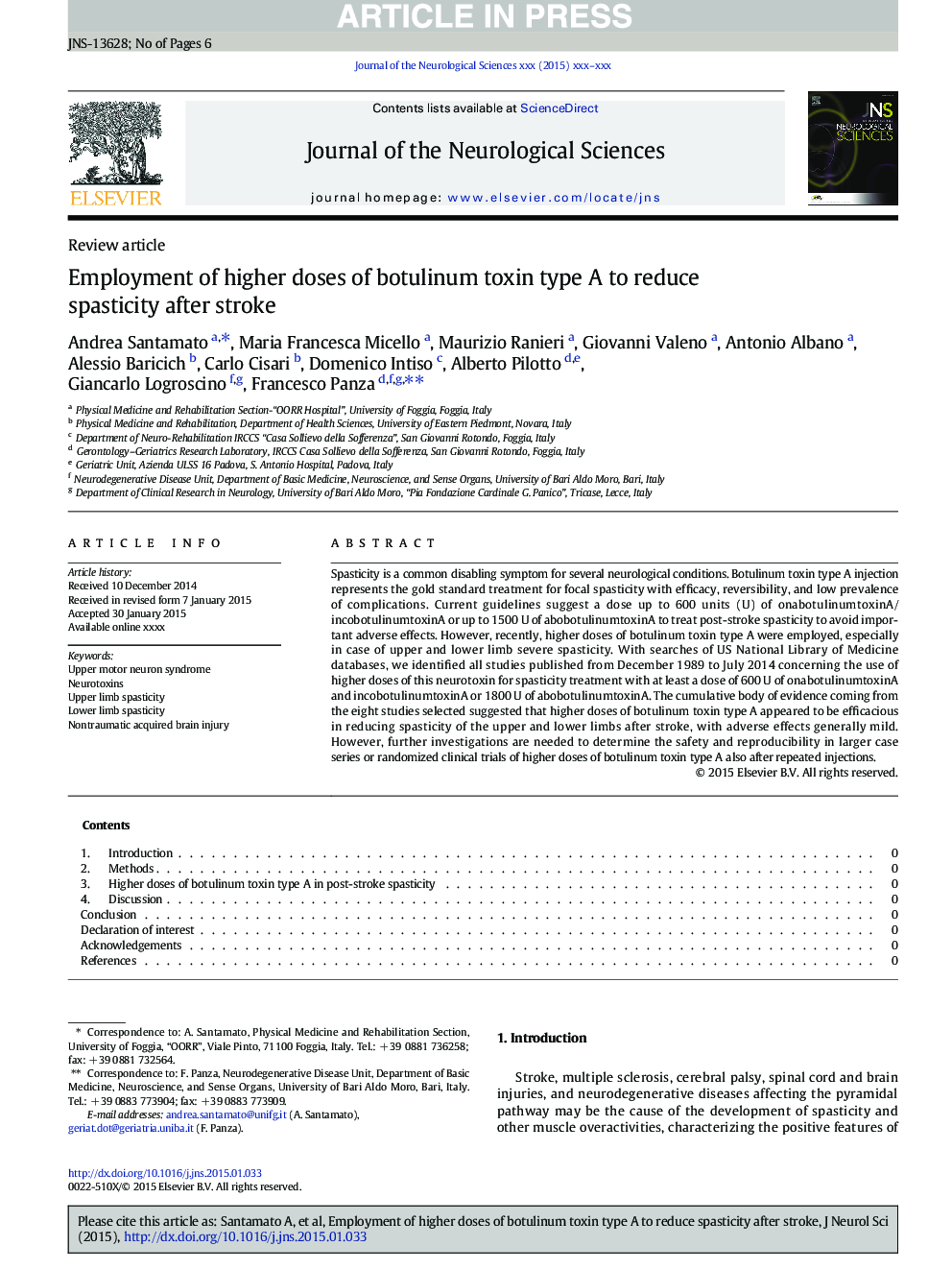| Article ID | Journal | Published Year | Pages | File Type |
|---|---|---|---|---|
| 8276232 | Journal of the Neurological Sciences | 2015 | 6 Pages |
Abstract
Spasticity is a common disabling symptom for several neurological conditions. Botulinum toxin type A injection represents the gold standard treatment for focal spasticity with efficacy, reversibility, and low prevalence of complications. Current guidelines suggest a dose up to 600Â units (U) of onabotulinumtoxinA/incobotulinumtoxinA or up to 1500Â U of abobotulinumtoxinA to treat post-stroke spasticity to avoid important adverse effects. However, recently, higher doses of botulinum toxin type A were employed, especially in case of upper and lower limb severe spasticity. With searches of US National Library of Medicine databases, we identified all studies published from December 1989 to July 2014 concerning the use of higher doses of this neurotoxin for spasticity treatment with at least a dose of 600Â U of onabotulinumtoxinA and incobotulinumtoxinA or 1800Â U of abobotulinumtoxinA. The cumulative body of evidence coming from the eight studies selected suggested that higher doses of botulinum toxin type A appeared to be efficacious in reducing spasticity of the upper and lower limbs after stroke, with adverse effects generally mild. However, further investigations are needed to determine the safety and reproducibility in larger case series or randomized clinical trials of higher doses of botulinum toxin type A also after repeated injections.
Related Topics
Life Sciences
Biochemistry, Genetics and Molecular Biology
Ageing
Authors
Andrea Santamato, Maria Francesca Micello, Maurizio Ranieri, Giovanni Valeno, Antonio Albano, Alessio Baricich, Carlo Cisari, Domenico Intiso, Alberto Pilotto, Giancarlo Logroscino, Francesco Panza,
